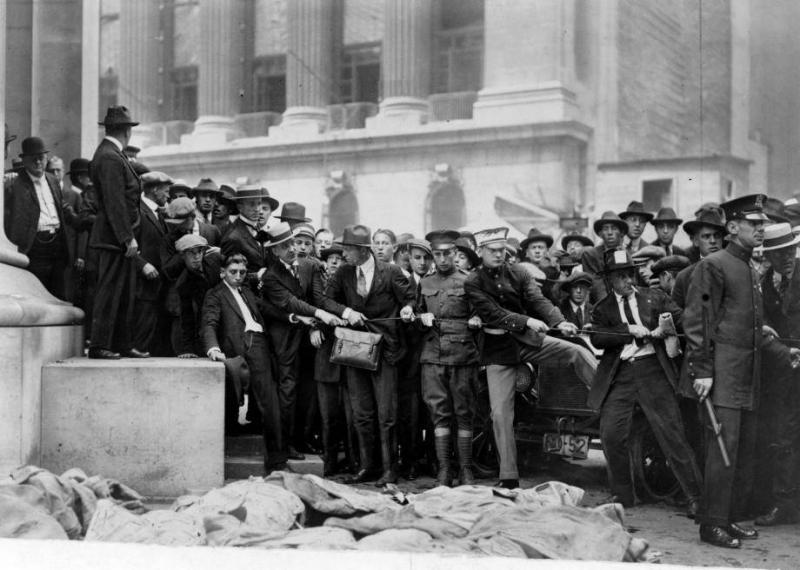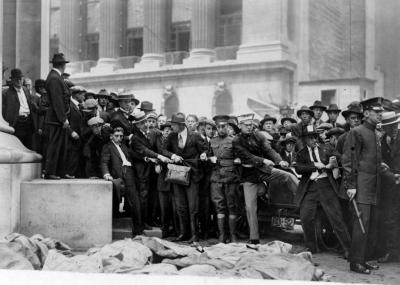Between April and June 1919, the United States faced bloody attacks orchestrated by Italian anarchist Luigi Galleani's followers. During this period, these attacks primarily targeted politicians opposing immigration policies, journalists, and businessmen. In response, U.S. authorities launched a widespread campaign of arrests, resulting in the detention and deportation of thousands of immigrants from American soil.
In 1920, Americans were shaken by an explosion on Wall Street in Manhattan, the economic heart of the country. This attack killed dozens of passersby.
As the 1920s began, Manhattan represented the center of American capitalism. Wall Street was the most important economic area in Manhattan, hosting the stock exchange and the headquarters of J.P. Morgan & Co, described post-World War I as the most influential banking institution in the world.
On September 16, 1920, Wall Street was bustling with people, including a large number of businessmen, brokers, and passersby. Amid this activity, an unknown individual parked a horse-drawn cart loaded with over 50 kilograms of explosives at the roadside near J.P. Morgan & Co.
At approximately 12:01 PM, the cart exploded among the crowd, sending debris flying hundreds of meters away. The blast resulted in the immediate deaths of 30 people, with 10 more succumbing to injuries later at the hospital. The explosion injured hundreds, 140 of whom were reported to have serious injuries. It also disrupted trading on Wall Street, prompting New York authorities to dispatch over 2,000 security personnel and medical staff to the scene.
Due to previous attacks in the prior year, American investigators suspected that communist and anarchist groups were behind this incident, aiming to target J.P. Morgan & Co. Moreover, the police found leaflets on Wall Street demanding the release of all political prisoners in American jails or else face the consequences. Regarding the nature of the explosives used in the Wall Street bombing, U.S. investigators noted a strong resemblance to those manufactured by the previously deported Italian anarchist Luigi Galleani.
However, due to the lack of conclusive evidence linking the Italian anarchists to the attack and the perpetrator's escape, U.S. authorities were unable to charge anyone and had to close the case after three years. By 1944, the FBI reopened the Wall Street bombing case, suspecting Italian anarchists were behind it.
Additionally, American investigators questioned the involvement of Italian anarchist Mario Buda in the bombing. According to reports, Mario Buda left the U.S. and returned to Italy shortly after the Wall Street explosion.
Later, the FBI closed the Wall Street bombing case without charging anyone. To this day, this case remains classified as an unsolved criminal incident.




